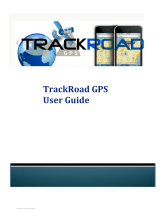
Click on the check box for any Available geofence to edit its configuration and
press the Save button to implement it.
The View Geofence tab allows you to view your geofences.
Click the Speed button on the dashboard to set up speed alerts. Simply
select your device and enter a speed which, when exceeded, will generate an
alert. Choose the days and times you would like the alert to be active, if you
would like duplicate alerts to be ignored, and enter an email address where
you wish to receive your notifications. If you would prefer to receive alert
notifications via text message, click on the + button and enter your phone
information. Hit Save once you have finished configuring your alerts.
Click the Panic button to set up panic alerts. Choose a device and whether
you would like to ignore duplicate alerts (not suggested for the panic feature),
and choose the icon you would like to appear on the map to denote a panic
alert. If you would like to receive emailed alerts, enter your email address into
the Email Address bar. If you would prefer to receive alerts via text message,
press the + button and enter your phone information. Hit Save once you have
finished configuring your alerts.























